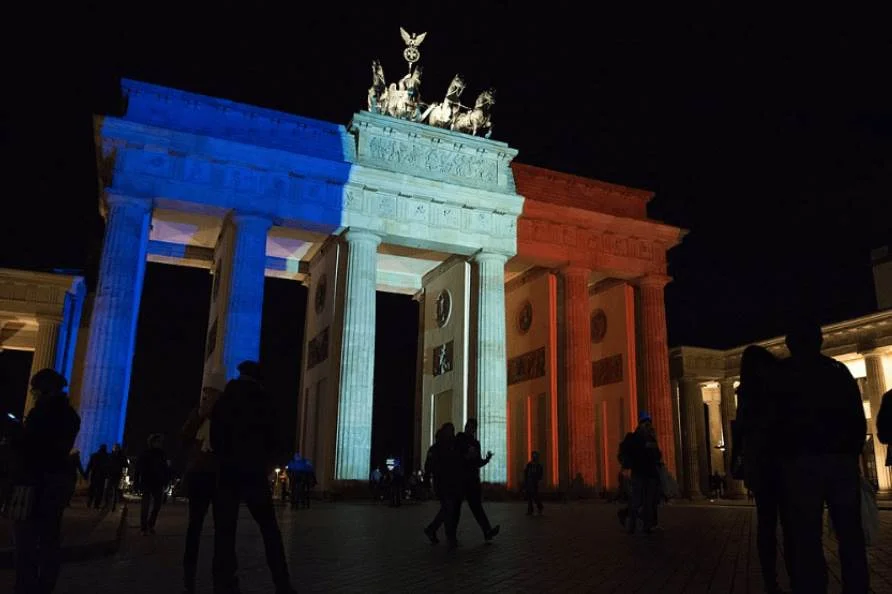It’s one of the most famous and best-known monuments in all of Germany and a historic building in Berlin.
In this post, you’ll discover the ultimate list of facts about the Brandenburg Gate, one of the great landmarks in the city.
1. Berlin used to be a walled city
In the 17th century, Berlin was still a small city that was completely walled. The fort inside the walls was a star fort which consisted of multiple gates. The Brandenburg Gate, a monumental arch, was not yet part of the old fortress of Berlin.
After the Thirty Years’ War, one of the bloodiest conflicts in human history that was fought in central Europe, Berlin became a relatively peaceful city under the reign of King Frederick Willem I.
2. The Brandenburg gate was part of an old wall
In this time of growth and prosperity in the 18th century, the city grew rapidly and a new outer wall was constructed called the “Berlin Customs Wall.”
This wall, which was built between 1737 and 1860, consisted of 18 gates which included the Brandenburg Gate.
The wall and gates didn’t have a real defense function but were used to collect taxes from people entering the city.
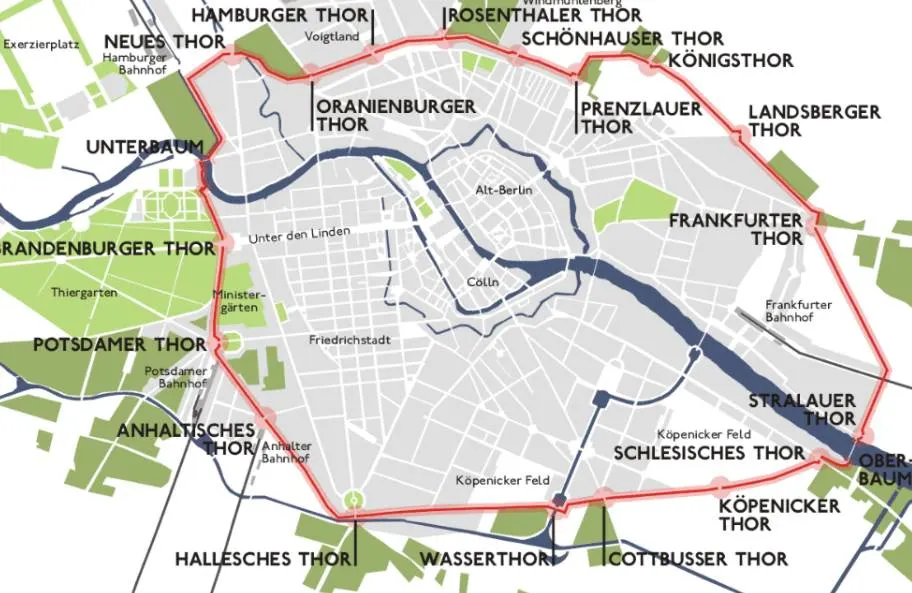
3. The original gate was very simple
As the Brandenburg gate was initially used to merely collect taxes, it only consisted of a rather simple gate and guardhouses.
As the city grew further, the Brandenburg Gate became more and more important for Berlin, so it was time to replace the simple gate with a massive monument!
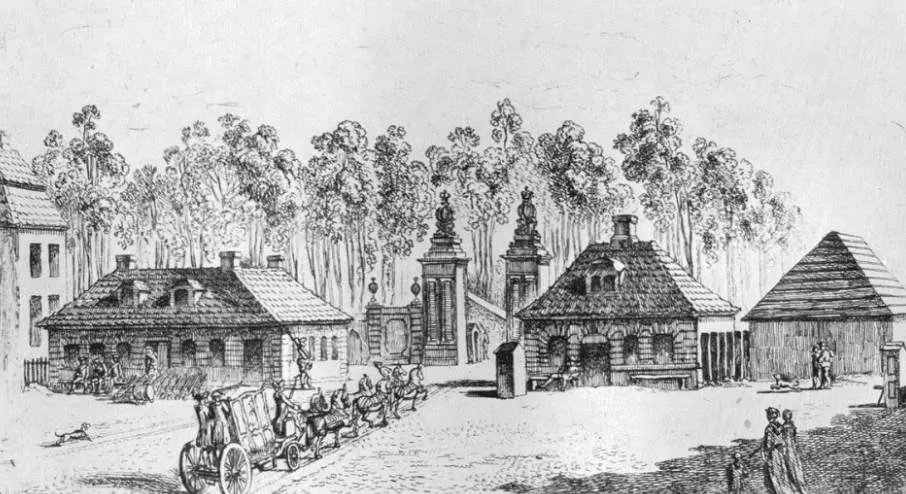
4. It originally had a different name

The new Brandenburg Gate was commissioned by Frederik Willem II of Prussia, and the Court Superintendent of Buildings, Carl Gotthard Langhans was assigned as the main architect. Construction started in 1788 and the monument was completed in 1791.
Why was the Brandenburg Gate built?
As a representation of peace in the city. For this reason, it was originally called the “Friedenstor” or “the Peace Gate.”
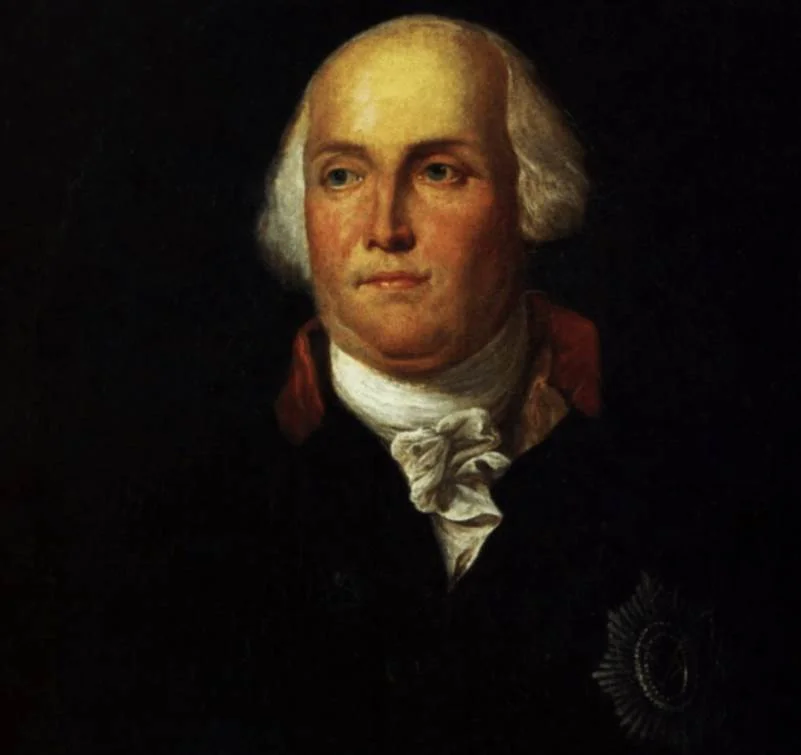
5. There’s another Brandenburg Gate
The Brandenburg Gate is not to be confused with the gate of the same name which is located on the Luisenplatz in Potsdam, a city bordering Berlin. This monument was built 2 decades earlier in 1770-1771.
The Potsdam Brandenburg Gate is a similar structure to the Arc de Triomphe in Paris or the Arch of Constantine in Rome and is a triumphal arch.

6. The famous Brandenburg Gate is based on a structure in Athens
One of the most interesting facts about the Brandenburg Gate is that it was based on the Propylaea, the gateway that leads up to the famous Acropolis in Athens.
It has a Neoclassical style though and consists of 12 Doric columns, 6 on each side, which form 5 passageways.
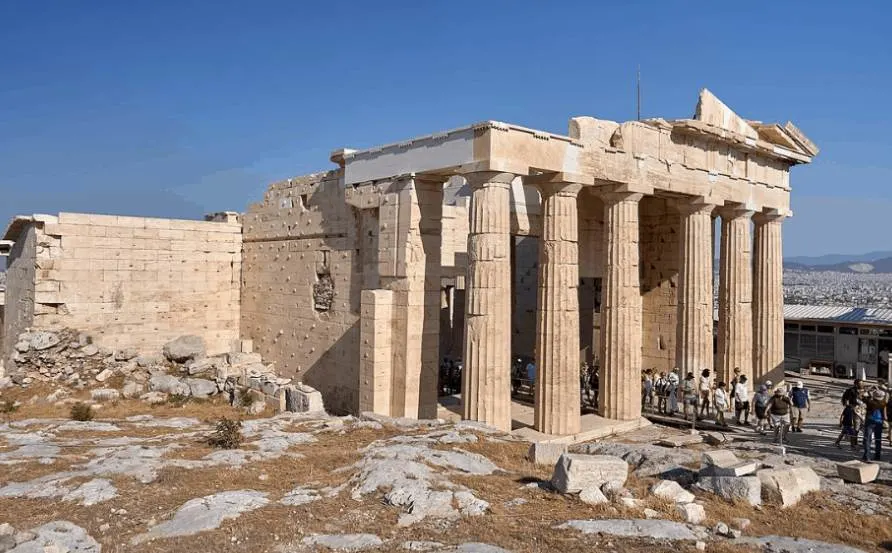
7. There’s a Quadriga on top of it
The monument is considered to be consistent with the architectural style of Berlin in this period as many classical buildings and monuments were erected in this period.
One of the most prominent features is the Quadriga on top of the Brandenburg Gate, which represents Victoria, the Roman goddess of victory, riding a chariot drawn by 4 horses.
The sculptor of this amazing statue was Johann Gottfried Schadow (1764-1850), one of the most prominent Prussian sculptors s of the time.
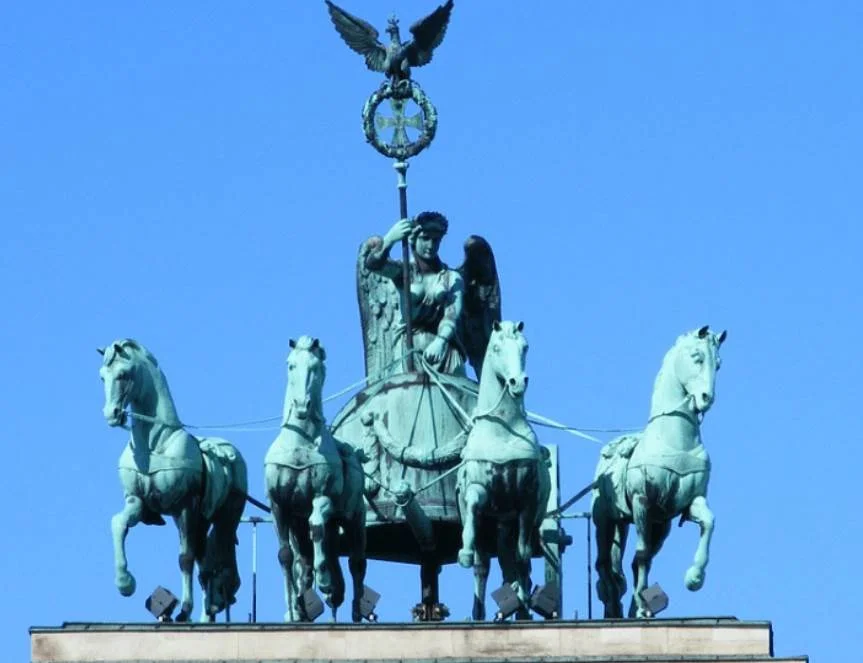
8. The Quadriga went missing for almost a decade
The Quadriga was added on top of the Brandenburg Gate in the year 1793, which was at the height of the French Revolution. This wasn’t a fitting moment to decorate a monument that was built to represent peace.
Numerous wars followed this significant period in human history, and after Napoleon defeated the Prussians in the battle of Jena-Auerstedt, Napoleon not only used the Brandenburg Gate in a triumphal procession, he also removed the Quadriga and brought it back to Paris.
Napoleon was, however, defeated by the Prussians in 1814 under the command of Ernst von Pfuel, who in return occupied Paris and brought the Quadriga back to where it belongs, on top of one of the most significant monuments in Berlin.
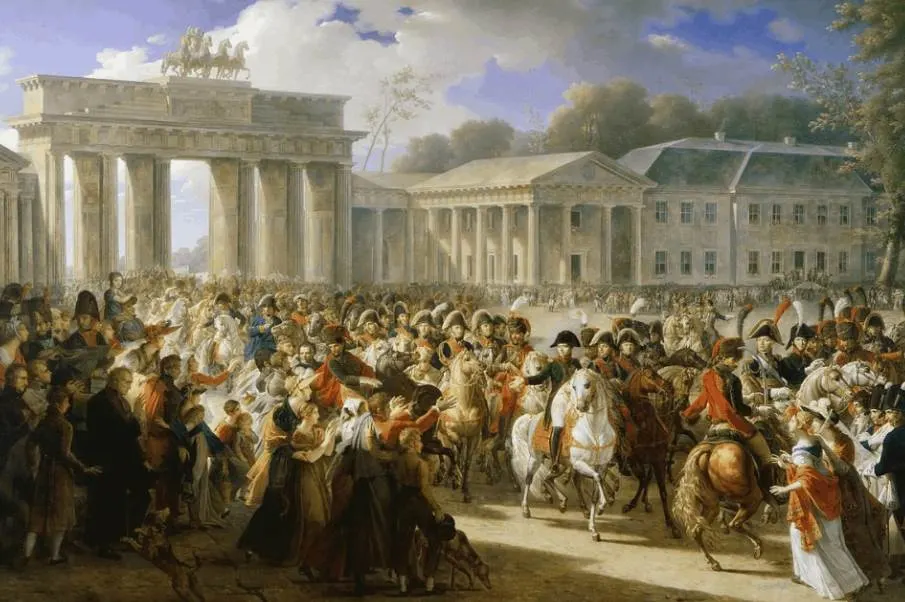
9. Upon its return, the Quadriga was redesigned
The goddess Victoria riding the chariot on top of the Brandenburg Gate was finally restored. To emphasize her glory after her successful return, the sculpture was redesigned.
Karl Friedrich Schinkel redesigned the Quadriga by adding the Prussian eagle and the Iron Cross inside a circle of oak leaves on Victoria’s lance.
This emphasized the importance of the Brandenburg Gate the fact that it became the symbol of Germany.
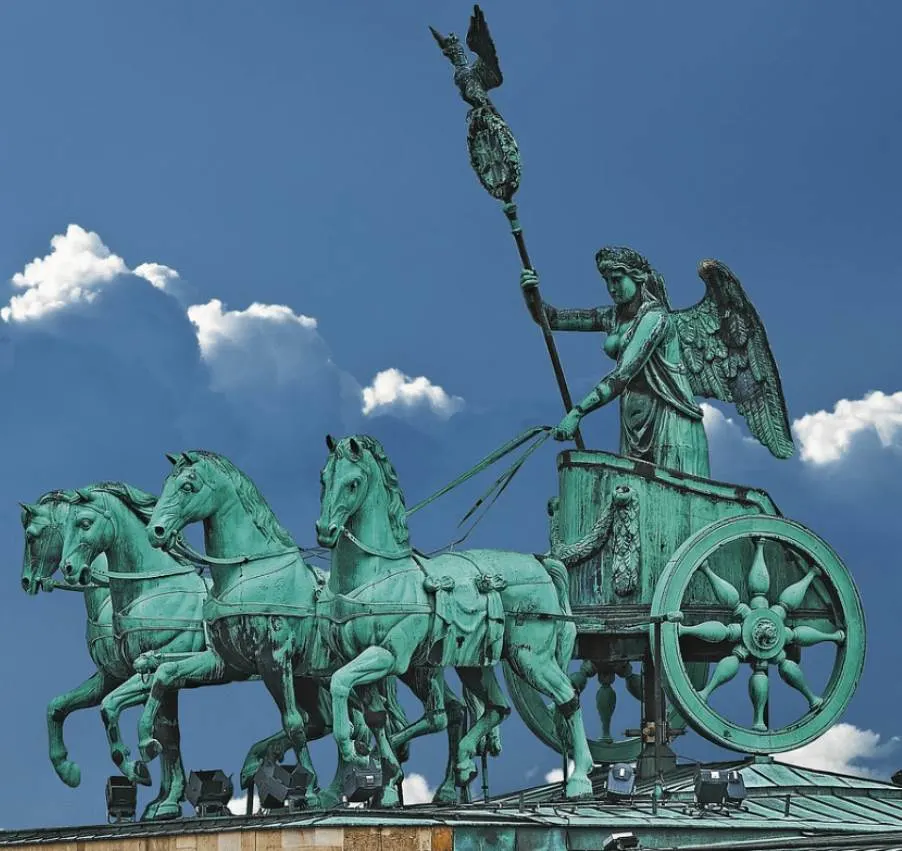
10. It once became the symbol of evil
The Brandenburg Gate was eagerly used by Nazi Propaganda Minister Joseph Goebbels as a symbol of the nation when the Nazis rose to power. In that sense, it went from being a symbol of freedom to the exact opposite.
11. It was badly damaged during World War II
The Pariser Platz lay in complete ruins after World War II, but remarkably, the Brandenburg Gate was still standing.
All the columns had holes in them though from bullets and explosions, and only one head of the horse of the Quadriga was still intact.

12. It helped to separate East from West
After a period of joint efforts to restore the Brandenburg gate, East and West Germany were separated by the Berlin Wall. This happened on August 13, 1961. This day is referred to as “Barbed Wire Sunday.”
Until the Wall was torn down, the gate was closed and the ultimate symbol of peace became part of the separation of Germany.
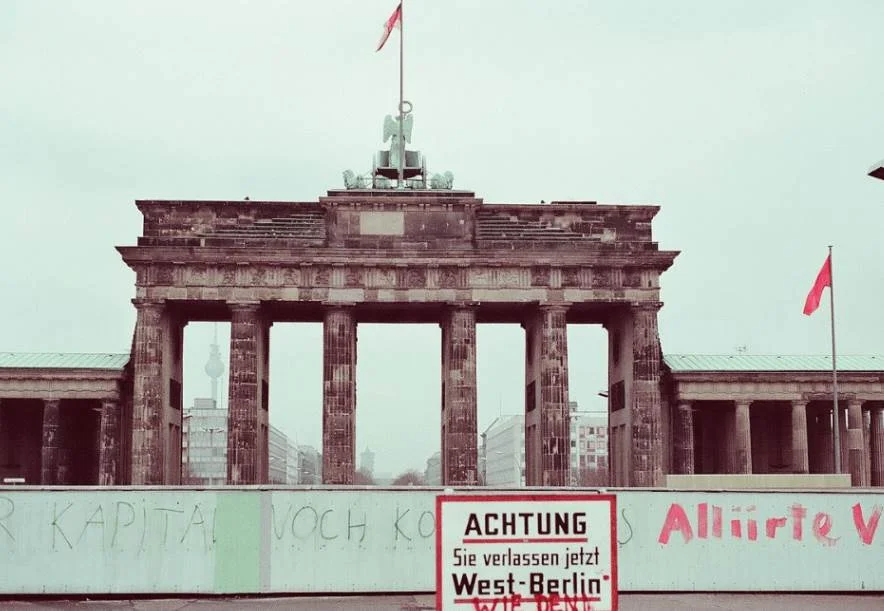
13. The gate was a prominent figure in the Revolution of 1989
During the Revolution of 1989, which is also referred to as “The Fall of Communism” in Central and Eastern Europe, thousands of people gathered on the Pariser Platz to celebrate a historic moment.
The Berlin Wall fell on November 9, 1989, and finally reunited East and West Germany to form a unified Germany. The Brandenburg Gate, yet again, became the symbol of peace, the very reason it was constructed in the first place.
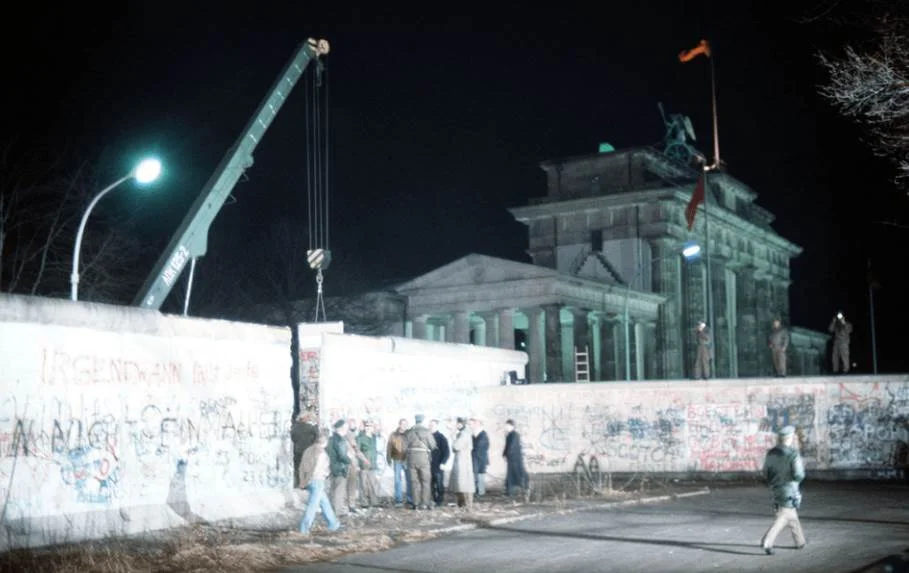
14. It’s the most famous spot to celebrate a unified Germany
in December 2009, Germany organized a big party to celebrate the fall of the Berlin Wall to commemorate the 20th anniversary of this historic moment in German history. This night was called the “Festival of Freedom.”
The most memorable moment of this celebration was when 1,000 big domino blocks, each over 2.5 meters (8 ft 2 in) tall, were lined up in the place where the wall used to be and toppled as a metaphor for the fall of the real wall.
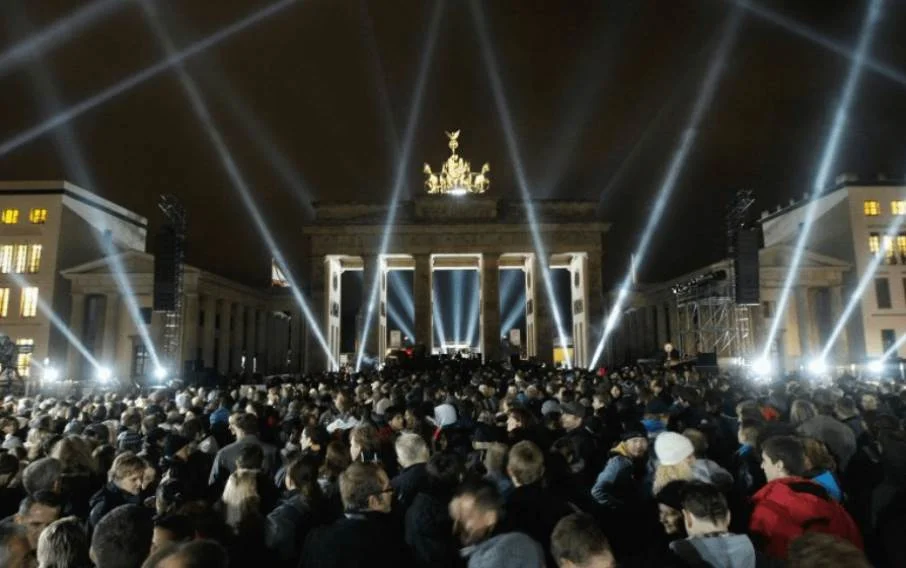
15. Other celebrations happen here as well
Celebrating a unified Germany isn’t the only reason that the location near the Brandenburg Gate is used. It’s used for big events of all sorts.
Some of the most notable are sporting events, such as the finish line of the Berlin marathon, or celebrations whenever Germany wins the World Cup Football, which happened in 2014. The national football team held their victory rally right near the gate on the Pariser Platz.
One of the most beautiful moments for the Brandenburg Gate is the “Festival of Light,” which brings amazing color shows to the most famous landmarks in Berlin once a year.
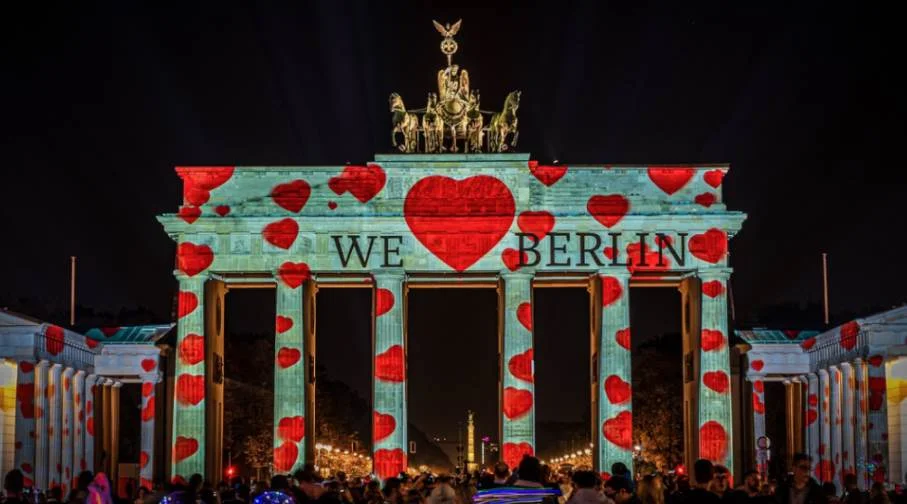
Quick facts about the Brandenburg Gate
16. The Brandenburg Gate is located on the “Pariser Platz.” This square was named in honor of the anti-Napoleon Allies’ occupation of Paris in 1814. It’s located just west of the historic city center of Berlin.
17. The original gate was named after the town of Brandenburg an der Havel which used to be the capital of the Margraviate of Brandenburg, a major principality of the Holy Roman Empire up until 1806. The gate marked the starting point of the road from Berlin leading up to this town.
18. The Brandenburg Gate was built at the height of the Greek revival movement, an architectural period in Northern Europe and America that revived the style of Ancient Greek buildings.
19. It consists of 5 passageways which are formed by 6 rows of 2 columns. One of the most peculiar facts about the Brandenburg Gate is that regular citizens were only allowed to walk through the outer 2 passageways initially.
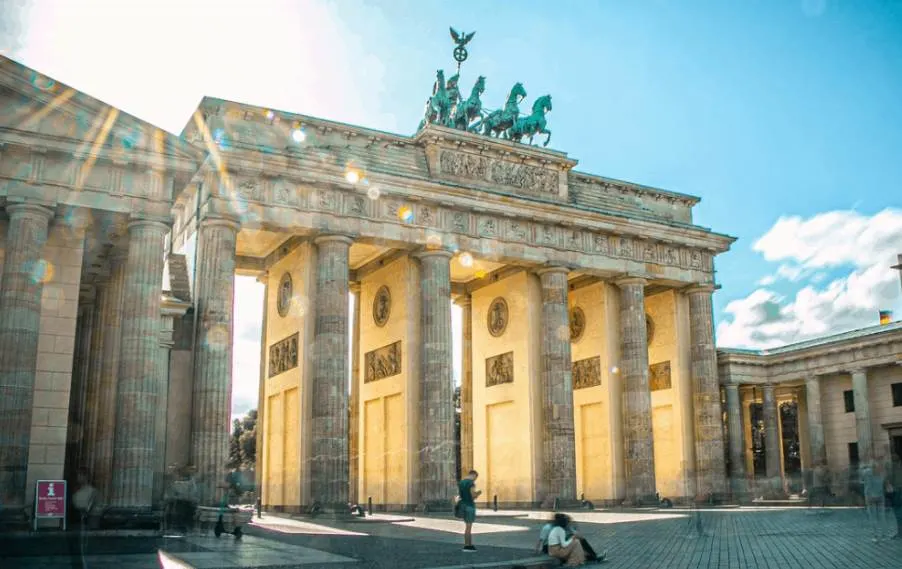
20. The Quadriga sculpture on top of the Brandenburg Gate was sculpted by an artist who was only 29 years old at the time in 1793.
21. When the Quadriga was restored on top of the Brandenburg Gate after it was “stolen” by Napoleon, the Von Pfuel family were the only ones to be allowed to pass through the central gateway apart from the Royal family from 1814 to 1919. Ernst Von Pfuel was the general who oversaw the return of the Quadriga on top of the Brandenburg Gate from Paris.
22. The other exception as to who could pass through the central gateway were ambassadors who had to deliver letters of credence to the Prussian government.
23. The Greek Revival in Berlin was strengthened after the French occupied the city in the early 19th century. Karl Friedrich Schinkel, the architect, and designer who redesigned the Quadriga upon its return, was the main proponent of the Greek Revival style. The reason was to part with the Roman style which was mainly associated with the French.
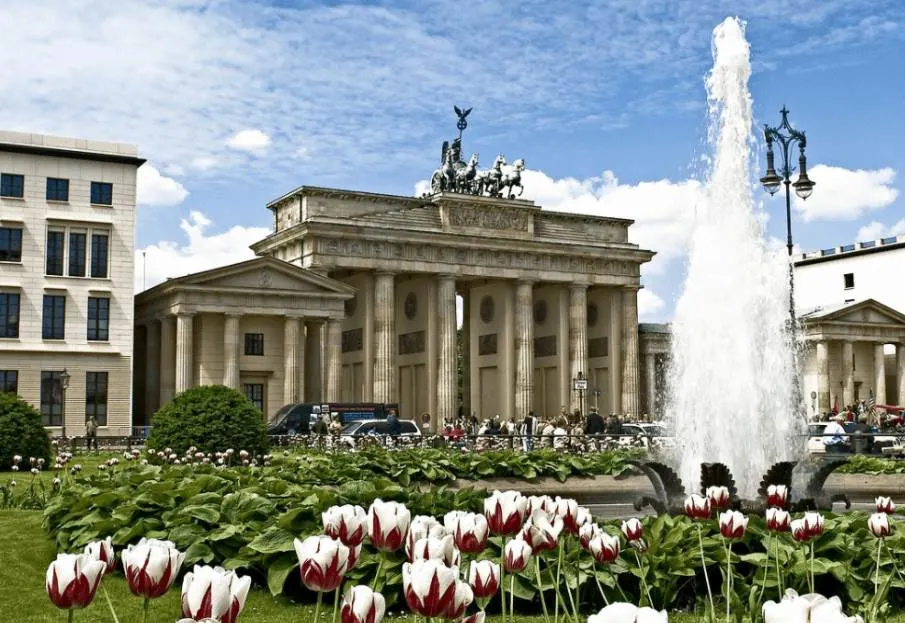
24. After World War II, it was one of two buildings that still stood in the ruins of the24. Pariser Platz, with the Academy of Fine Arts being the other one.
25. Even though the joint efforts of East and West Germany helped to completely restore the gate, the bullet holes and other damage of explosions remained visible for many years.
26. One of the most amazing facts about the Brandenburg Gate is that citizens of Berlin could freely pass it after World War II. This lasted until the day in 1961 that the Berlin Wall was built and East and West Germany got separated from each other.
27. American President John F. Kennedy made one of the most prominent anti-communist speeches during the Cold War in 1963. The speech was made for his words “Ich bin ein Berliner.” During his visit, he also visited the Brandenburg Gate. The Soviets, however, hung red banners on the other side so he couldn’t look into East Berlin.
28. Another American President, Ronald Reagan, made another famous speech, this time right in front of the Brandenburg Gate in 1987, demanding the destruction of the Berlin Wall. His exact words were: “Open this gate, Mr. Gorbatchov, Tear down this wall!”
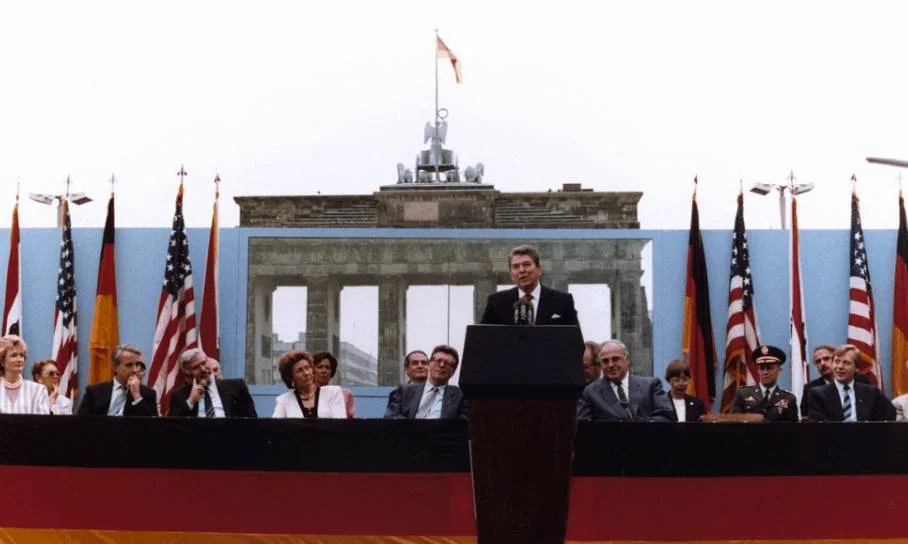
29. After the fall of the Berlin Wall, the crossing through the Brandenburg Gate was reopened on December 22, 1989. This was made official when Helmut Kohl, the chancellor of West Germany, and Hans Modrow, the prime minister of East Germany, greeted each other after walking through the gate.
30. It’s only just over half the size of the Arc de Triomphe in Paris. It’s only 26 meters (85 ft) high while the latter is 50 meters (164 ft) high.
31. The area in front of the gate is mainly a cobblestone pedestrian zone, and it’s one of the largest squares in Berlin. Over a million people can gather in the square and it resembles the space in front of the Lincoln Memorial located in the National Mall in Washington D.C. which had its fair share of memorable speeches.
32. The entire area is made pedestrian-only and vehicles aren’t even allowed to pass through the gate anymore.
33. The Brandenburg Gate remains a symbol of peace, freedom, and solidarity. It was lit in the French colors after the horrific attacks in November 2015 in Paris. This emphasizes the importance of the monument as the ultimate symbol of a unified Germany!
